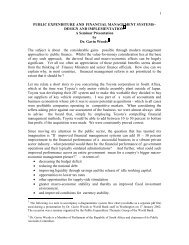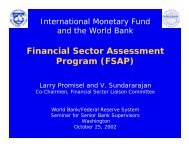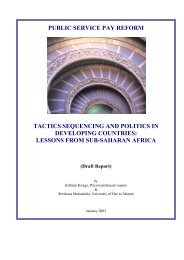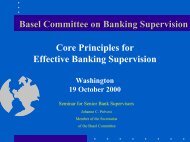Barriers to Entrepreneurship - World Bank
Barriers to Entrepreneurship - World Bank
Barriers to Entrepreneurship - World Bank
- No tags were found...
Create successful ePaper yourself
Turn your PDF publications into a flip-book with our unique Google optimized e-Paper software.
<strong>Barriers</strong> <strong>to</strong> <strong>Entrepreneurship</strong>Leora Klapper(<strong>World</strong> <strong>Bank</strong>)Luc Laeven(<strong>World</strong> <strong>Bank</strong> and CEPR)Raghuram Rajan(IMF and NBER)<strong>World</strong> <strong>Bank</strong>, January 10, 2005
Motivation• Little is known about the business environments that promotenew firm creation. This is an important concern forpolicymakers, who are trying <strong>to</strong> implement policies that willfoster entry.• What is the role of entry regulations, especially bureaucraticregulations on setting up limited liability companies, inexplaining variations in patterns of firm entry?• The early debate on entry regulations emphasized the possibilitythat crooks might register with little capital and dupeunsuspecting inves<strong>to</strong>rs or consumers. According <strong>to</strong> this view,entry regulations serve the public interest by preventing fraud.• Others describe regulations as devices <strong>to</strong> protect private interestsof industry incumbents or the regula<strong>to</strong>rs.2
Contribution• We first show that entry regulations do affect entry.• Next we study the consequences of preventing free entry for thegrowth of incumbent firms.• A cross-country regression of firm entry against regulations maysuffer from a causality problem – that in countries with generallylow entry, people are not sufficiently motivated <strong>to</strong> press for therepeal of regulations that impede entry.• To address this sort of problem, we focus on cross-industry, crosscountryinteraction effects. In particular, we test whether entry isrelatively lower in “naturally high entry” industries when they arein countries with high bureaucratic restrictions on entry.3
Data• Our primary source of firm-level data is the Amadeus databasewith information on >5 million firms in 34 European countries.• It improves upon previously used datasets in that it includes a largenumber of private firms and all industrial sec<strong>to</strong>rs.• We measure entry as the share of new firms, calculated at thecountry and industry level.• Proxies for natural propensity <strong>to</strong> enter and other industrycharacteristics from a variety of sources, all based on U.S. data• Proxies for entry barriers and other regulations from a variety ofsources.4
Entry Regulations Hamper<strong>Entrepreneurship</strong>• We find that entry regulations hamper entrepreneurship, especiallyin industries that naturally should have high entry.• Relative entry in<strong>to</strong> industries with high entry in the U.S. isdisproportionally higher in countries with low entry costs.• The effect is generally present in all countries and industries.• The results are robust <strong>to</strong> using alternative measures of the naturalpropensity <strong>to</strong> enter, including U.S. exit rates, SME shares, andaverage firm size and scale variables.• Both the availability of private (bank) credit and of trade creditaids entry in financially dependent industries.5
Causality• There could be omitted variables that jointly drive the propensity <strong>to</strong>enter and the degree of bureaucratic entry barriers: but the resultshold when we instrument entry regulation with legal origin.• Perhaps countries with large “high natural entry” industries have astrong entrepreneurial culture and select low entry regulation: butthe results hold when we restrict the sample <strong>to</strong> industries that arerelatively small. These industries are unlikely <strong>to</strong> be responsible forentry barriers since they have limited political clout.• Countries with more untrustworthy populations may erect higherbureaucratic barriers so as <strong>to</strong> screen would-be entrepreneurs morecarefully. If such barriers were meant <strong>to</strong> screen entry efficiently,we should expect them <strong>to</strong> be particularly effective in low-income/high-corruption countries relative <strong>to</strong> high-income/low-corruptioncountries. We find they are not. Entry regulations have adverseeffects primarily in countries that are more developed/less corrupt.6
Are Entry <strong>Barriers</strong>Socially Harmful or Beneficial ?• If entry barriers screen appropriately (public interest view), weshould find that incumbent older firms in naturally high entryindustries should grow relatively faster in countries with highentry regulations. We find the opposite (private interest view).• The value added by naturally “high-entry” industries grows moreslowly in countries with high entry barriers. The effect isprimarily seen for older firms suggesting that entry barriers mutethe disciplining effect of competition.7
Conclusions• Taken <strong>to</strong>gether, these results suggest that entry regulations areneither benign nor welfare improving. These regulations seempurposefully intended <strong>to</strong> protect incumbent firms.• We do not imply all regulations inhibit entry. Regulations thatenhance the enforcement of property rights or lead <strong>to</strong> a moredeveloped financial sec<strong>to</strong>r do lead <strong>to</strong> greater entry in industries thatdo more R&D or industries that need more external finance.• Our paper suggests that competition has disciplinary effects tha<strong>to</strong>utweigh any possible screening benefits from entry restrictions. Ifso, moves <strong>to</strong> reduce bureaucratic entry regulations will helpcountries.8
What Next ?
Future Research• Need more and better data on small and new firms, even for theUnited States.• Measuring firm creation requires data on redeployment of assets,mergers and acquisitions, spin-offs, re-registrations, etc.• Need <strong>to</strong> (re)define “firm entry” and “entrepreneurship”.• Is the United States a useful benchmark for natural entry rates andindustry structures more generally ? Not if U.S. bankruptcysystem is inefficient ?• Need <strong>to</strong> study the life cycle of firms, tracking firms over time, andsimultaneously look at entry, exit, and industry structure.• Political economy of entry: formal and informal barriers created bygovernment and incumbents.10


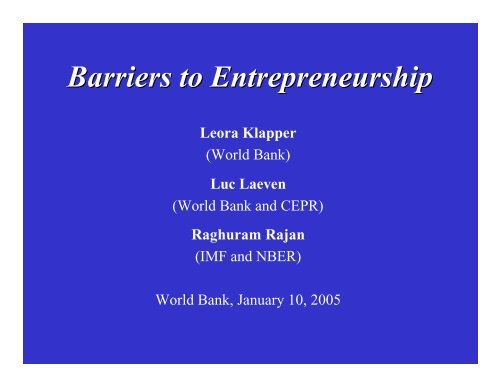
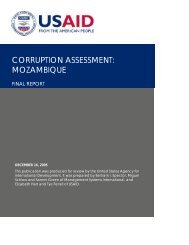
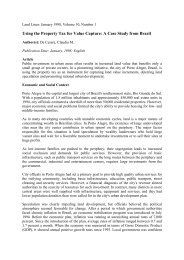

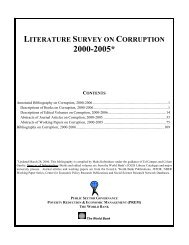

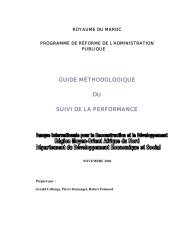
![Budget Execution: Overview [PDF 453K]; Bill Dorotinsky - World Bank](https://img.yumpu.com/47844909/1/190x143/budget-execution-overview-pdf-453k-bill-dorotinsky-world-bank.jpg?quality=85)
